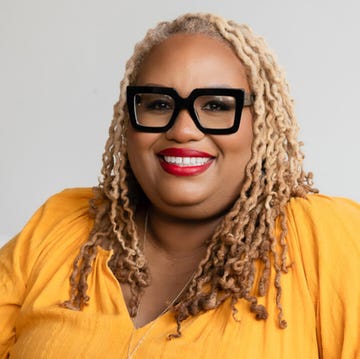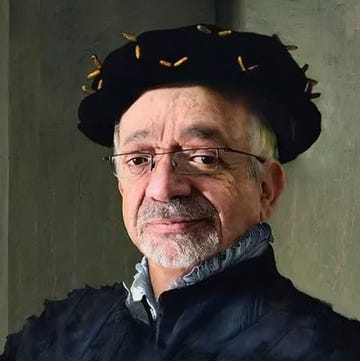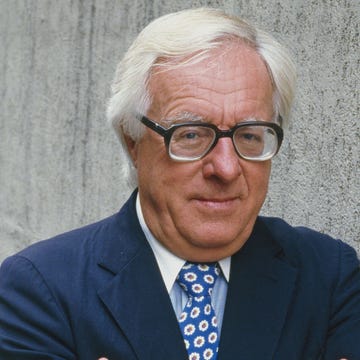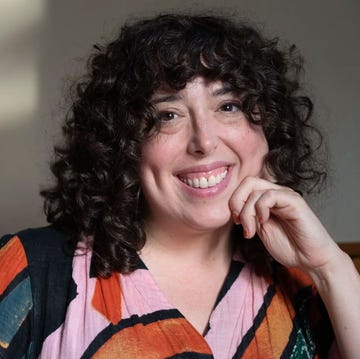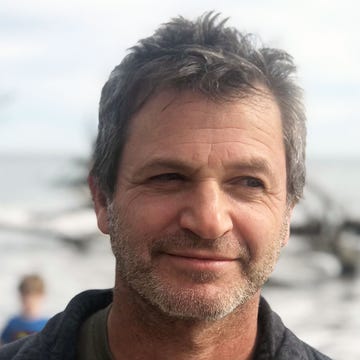What if ground zero for an essential strain of 20th-century modern art wasn’t Paris 1907 (Pablo Picasso’s disjointed nudes) or New York City 1947 (Jackson Pollock’s drips) but rather San Francisco 1967, where Ruth Asawa made intricate sculptures alongside her six children in her Noe Valley home? What if Asawa, and other artist-mothers who were her friends and fellow activists, founded a new métier for modernism, one that runs entirely counter to the modernist trope of the solitary genius toiling alone in his spacious studio? Well, in fact, they did.
Jordan Troeller begins the introduction of her remarkable book Ruth Asawa and the Artist-Mother at Midcentury with a 1967 photograph of Asawa by John Waggaman. Depicted alongside five of her children and the family dog, she is wearing a work-splattered sweatshirt and pants, posed beneath one of her now-famous hanging wire sculptures, with art by friends and mentors on the walls. Included in an exhibition and book from that time, Portraits of Artists, Asawa is the only one of 57 California artists (just 4 of them women) that Waggaman shot for the show who is not depicted alone, grappling solo with the heroic demands of art. Instead, Asawa poses with her children, her art, and her home, all three coextensive to her work as an artist. It was, and is, a little unthinkable, even revolutionary.
I’ve heard artists who are mothers today say that they are sometimes wary of galleries, curators, and collectors connecting them too much with motherhood, aware of its taint of unseriousness or dilettantism. It’s likely not an unfounded fear, though things may be changing. (See Hettie Judah’s 2022 book How Not to Exclude Artist Mothers (and Other Parents).) The change has been slow to come, even though, as Troeller convincingly recounts, it’s been more than half a century since Asawa and fellow artist-mothers in and around San Francisco created a new vein of modernism via motherhood itself. It’s a bold assertion, but Troeller’s thorough archival work—which includes uncovering fascinating previously unseen photographs—proves more than convincing that Asawa consciously allied herself with motherhood as an artist but that this connection was often edited out by an art world eager to protect her image and promote her as a “real” artist. Troeller further grounds her findings with a clear grasp of San Francisco’s culturally distinct neighborhoods and the homes of artists in Asawa’s circle.
While photographer Imogen Cunningham is the best known of these artists, it’s enlightening to discover lesser-known names in the book, such as architectural historian and artist Sally Woodbridge and jewelry designer Merry Renk, who with Asawa in 1968 started the Alvarado School Arts Workshop, “a mother-led experiment in creative art education.” According to Troeller, Alvarado was the first artist-led program in San Francisco city schools, an initiative for art in public schools begun by artist-mothers that laid the groundwork for what is today the Ruth Asawa San Francisco School of the Arts, founded in 1982 and one of the first public arts high schools on the West Coast.
For her part, Cunningham was critical of Asawa’s work in schools, which Asawa saw as an extension of her art, but Cunningham otherwise understood her fellow artist-mother’s desire to connect her art with her entire life. It should come as no surprise that Cunningham’s photograph of Asawa bent over while creating a sculpture, surrounded by her children, is the cover of Troeller’s book. That picture, and others like it by Cunningham, have become some of the most iconic and widely shared images of Asawa today. The impact of such a scene can hardly be overstated. In the history of art, this is something new.
In the early 1990s, when Asawa was still hard at work in Noe Valley, writer William Styron published his memoir of depression, Darkness Visible, wherein he cataloged a frightening list of modern artists and writers who sought relief in suicide—a list so eminent that such despair seems to coexist with modernism itself. In recent years, Olivia Laing in The Trip to Echo Spring: Why Writers Drink and Leslie Jamison in The Recovering: Intoxication and Its Aftermath have explored the evergreen example of the esteemed writer as alcoholic. We are surrounded by the mythologizing—and warnings—of these defining dangers of the creative life. Troeller counters these dark tropes with mothers.
This spring, the San Francisco Museum of Modern Art opened a blockbuster international Asawa retrospective that includes hundreds of her own artworks alongside select works by artist-mother collaborators like Renk and, of course, Cunningham—all staged across a staggering 14,000 square feet of exhibition space. One of the most moving galleries includes a wood-paneled re-creation of Asawa’s living room, complete with coffee table and hanging wire sculptures. A massive photograph of Asawa’s actual living room hangs as the backdrop, filled with lounging children and a large dog. It was taken by celebrated photographer Rondal Partridge, who was Cunningham’s son. This, then, is both vision and embodiment of art-making as a family affair—the manifold fruits of artist-mothers and their work.
There is something so hopeful, so…I hate to use the word nurturing, but here we are…procreative and powerful about Asawa’s example. She, and artist-mothers like her, offer an entirely new kind of art idol. Not the tortured solo genius but the community-minded mother in art. What might change for us if this new vision of modernism, of art, of genius, was honored and enacted? Everything. The whole landscape of what and who we value, encourage, and celebrate would change.•
Bridget Quinn is a writer, art historian, and critic living in western Sonoma County. She’s the author of the biography Portrait of a Woman: Art, Rivalry, and Revolution in the Life of Adélaïde Labille-Guiard and the books She Votes and Broad Strokes.








